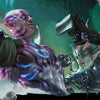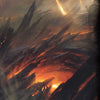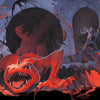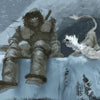10 Pro Tips for Designing a D&D Adventure
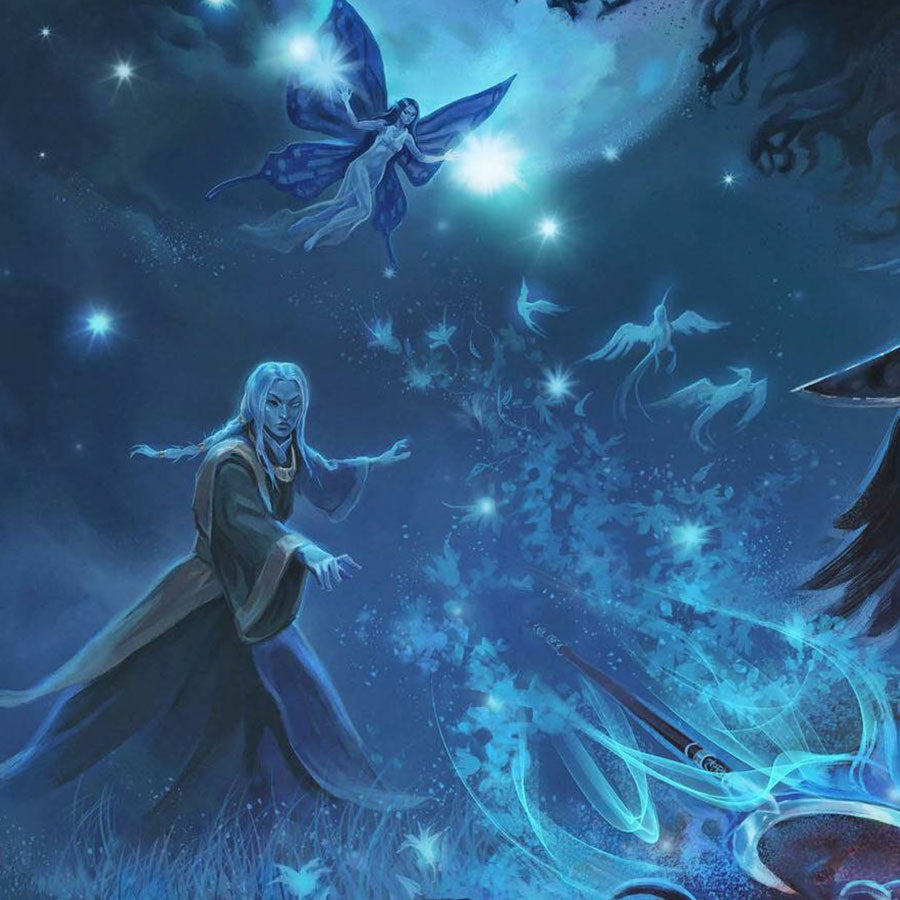
Today we’re going over 10 pro tips for designing an awesome D&D adventure that your players will love. In fact, this advice will apply to most other fantasy TTRPGs, such as Pathfinder 2e.
By the way, if you’re a new dungeon master feeling a bit OVERWHELMED by everything involved in running a D&D game, I completely understand. Being a DM isn’t always easy, and my personal goal is to help game masters by providing information and resources to make your life easier! That’s why my team and I make all these articles and videos.
However, Lairs & Legends is another such resource. With over 700 pages of adventures, monsters, puzzles, traps, and other 5e GM resources, you can SIGNIFICANTLY reduce your prep time and still run amazing games for your players.
Watch or listen to this article by clicking the video below.
#1 Determine the Central Conflict of the Adventure
Okay, look, you can’t just make a dungeon map, throw monsters in the rooms, and call it a D&D adventure. There really should be something more compelling about your adventure to draw your players into it and take it to the next level.
And that’s the central conflict. Maybe people refer to this as the plot or storyline of an adventure, but I don’t like calling it that because it implies that the dungeon master is determining the story, and that is a huge pitfall in my book.
A central conflict consists a disrupting factor, usually a villain, that creates a problem in the game world that the heroes are then called upon to resolve. It’s really that simple.
For instance, orcs are on the rampage and have laid siege to Rassalantar. You have some bad guys—and maybe a powerful orc chieftain as the main villain—and you have a problem that needs fixing.
But here’s the important part, dungeon masters. You stop there. It is not your job to determine HOW the players overcome this problem. That’s up to them. You simply set the situation up, introduce the conflict into the game world, and then turn the reins over to your players to determine how it gets resolved.
And then HOW your players resolve that central conflict determines the actual story. In other words, the dungeon master plants the seed, but the players water it and cultivate it to determine the majestic tree—or unsightly weed—that results.
#2 Use the Three Act Structure
The three-act structure is a pattern for telling stories that has existed since pretty forever. Homer and other classical writers use it. Shakespeare and other play writers use it. Even movies use it—well except for some of the recent Star Wars movies. Apparently, those script writers thought they were better than the combined experience of all humanity, but let’s not go into that, shall we?
This structure consists of four important elements that you want to put into your adventure. First, an inciting incident, which is also known as the plot hook.
Second, a rising action, which is the adventure itself. In this example, the heroes are trying to lift the siege against Rassalantar, so they might decide to sneak in at night, fight through a few orc guards that spot them—being careful to hide their bodies—and seek out the chieftain. You see, the players figure if they can kill the chieftain, the siege will probably break up.
Third, you want to have a climax to the adventure, which is typically a boss fight at the end. In this case, it’d be the powerful orc chieftain and his three lieutenants who are in the command tent discussing an assault on Rasslantar’s main gates.
And finally, you’ll have a resolution. This is when the heroes, after having defeated the orcs and ending the siege, report back to the Lords of Waterdeep and receive their reward. Or they might all end up dead in a TPK, because the entire orc encampment became alerted to their presence.
#3 Have a Good Plot Hook
I think something I hear a lot is dungeon masters complaining that their players always go off and do something different than the adventure the DM had prepared for them. And I can’t help but wonder to what extent this has to do with having a crappy plot hook.
Like, if you don’t deliver a good plot hook, you can’t blame your players for wandering off into the Sword Mountains and doing random crap instead of taking care of the orcs besieging Rassalantar.
So, what does a good plot hook look like? It does two things. First, it clearly describes what the problem is. Don’t beat around the bush with your players. Don’t try to be clever. Clearly lay out what the problem or central conflict is that needs to be resolved.
Second, you need to motivate your players to actually want to solve the problem. And this also involves motivating their characters. Don’t always count on your players “doing the right thing.” Sometimes that’s going to disappoint you.
Promises of money and even magic items—or even a long-lost treasure horde waiting to be discovered in a dungeon—usually do the trick. Though my best advice is to get to know your players and their characters and find out what motivates them, and then to include that sort of thing in your plot hooks.
Oh, and if you want a bunch of ideas for how you might reward your players’ characters, check out our Advanced Rewards & Recognitions System.
#4 Distribute Loot Throughout the Adventure
Dude, come one, really? You really gonna put all of the gold and magic items and other cool crap in a final chest that the players only find after they defeat the main villain? Don’t do that. Spread that crap out.
It encourages your players to explore the dungeon and poke around when they know they could find cool stuff hiding just around the corner. And even more than that, Exploration is one of the Three Pillars of D&D, and there are players who LOVE that stuff.
So sprinkle loot around the dungeon. Hide it places. And, yes, the boss will probably have a good share of the loot and perhaps the cool magic items—because, you know, they are the boss—but they shouldn’t have all of it.
#5 Use a Variety of Monsters
Holy crap, do you know how boring it gets for players to slog through an entire dungeon stocked full of only orcs? Or giants? Or whatever? Shoot, it even gets boring for the dungeon master.
Include a variety of creatures in your dungeon to keep things interesting and fun. Now, yes, there should be good reasons for them to be there, because a dungeon should make sense. So, use your brain, think about, and figure out why those creatures are there.
And I get that you may want to reinforce a theme in a dungeon or adventure. For instance, when our heroes are breaking up the siege on Rassalantar, there are lots of orcs there. But there are also dire wolves, and maybe even a winter wolf allied with the orcs. And the orcs have brought on some bugbear assassin mercenaries, and bribed a couple hill giants to come along with the promise of food.
#6 Build Interesting Encounters
Now, I have an entire Encounter Building playlist that gives loads of information for building fun and memorable encounters for your players, but I’ll leave you with three quick pointers right now.
First, not every encounter in an adventure needs to involve combat. In fact, I go out of my way to include encounters that are intended to be pure social interactions, or talky talky bits. For instance, the orcs may have goblin slaves that really don’t want to fight the heroes, and might even give them useful information—such as where the orc chieftain’s command tent is—if the players treat them nicely.
Second, give your players the freedom to overcome encounters creatively. This harkens back to not everything needing to involve combat.
Third, when you build your encounters, include a mix of creature types. So, you don’t just have six orc fighters. Instead, there are three orc fighters, two orc archers, and an orc shaman. Doing this makes your encounters far mor exciting and dynamic for your players.
#7 Design an Interesting Boss Encounter
Look, all your work at building an amazing adventure for your players may easily be forgotten if your boss battle—the climax of the adventure—is lame and boring. Dungeon masters, please, we need to stop just putting a solitary big bad in the middle of a room and calling it a boss battle.
Because that’s not a boss battle. That’s just someone finding a monster with a high challenge rating and plopping it into the dungeon with little thought or planning. And players will chew threw big bads like that, surrounding them and pounding them into oblivion.
Bosses need minions. The boss’s lair needs some dynamic terrain for players to navigate. Legendary actions and resistances. Special abilities that may not already be in the stat blocks.
And these are just some of the considerations. If you want to delve deeper into this topic, check out my articles on How to Make a Perfect Boss Fight.
#8 Make Interesting Locations in the Adventure
Why go to all the effort of making cool encounters and fun boss fights if it’s just going to take place in the middle of a boring room? Instead, put some thought in the dungeon’s rooms or the adventure’s outdoor locations. Make them interesting and unique. Special terrain. Objects. Gimmicks. Whatever.
Just make them more memorable than four walls and a ceiling.
#9 Make Cool Traps
A pit trap? Poisoned darts? A flame jet? Yeah, because those traps haven’t been done thousands of times before.
My suggestion to dungeon masters is to make your traps unique and interesting for your players. Give them something they’ve never come across before that’s going to get in their head and give them nightmares that make them bolt awake in cold sweats for months on end.
Okay, is that going too far? I feel like that might be going too far. Whatever.
And don’t overdo traps, unless the theme of your dungeon is traps, traps, and more traps! Because that is a thing. However, what I generally like to do is just place one or two strategic, well-designed traps in my adventures and call it a day.
If you want to learn more about trap building, check out my Trap Building playlist.
#10 Puzzles
What can I say about puzzles? Now, I don’t like puzzles much personally, but I know lots of people do, so including them in games from time to time is important. I do have a couple tips.
First, steal ideas from others to make your life easier, or simply buy pre-made puzzles you can drag and drop into your games. For instance, many issues of Lair Magazine have puzzles in them, and Loot & Lore is filled with puzzles of all difficulties you can use.
Second, the dungeon master doesn’t always need to know the answer to the puzzle. It is possible to simple design a puzzle without a specific solution, present it to you players, and then wait to see what they do and how they try to solve it.
Maybe the first few things they try are unsuccessful, and they get discouraged. But then one of them has an idea they are sure will solve it. And then, just as they are super hopeful and excited that they may have the answer—it works. And you’re players will be both thrill and relieved.
Is that cheating for the dungeon master? I don’t know, but it sure can be fun for players—as long as they don’t figure out your methods, because that kind of ruins it.
Being a Dungeon Master Shouldn’t Be an Exercise in Frustration!
When I was a new dungeon master, I was overwhelmed with everything I needed to do. Learn the rules, create the adventures, run the game, handle problem players—it was A LOT! And even as a veteran DM, it’s still a lot. You might even feel that way yourself.
This is exactly why my team and I dedicate our time to producing resources to help our fellow dungeon masters: we know exactly how you sometimes feel!
Now, if you’re stressed out with having to create all the adventures for your D&D game, or you’re looking for elements such as traps, puzzles, and encounters that you can drag and drop into your game, we have you covered. With Lairs & Legends and Loot & Lore, you’ll get over 700 pages of 5e resources:
- Twenty-nine 5e adventures spanning levels 1 to 15 and designed for groups of 4 to 6 players.
- Over 100 new creatures from CR 0 to CR 24.
- Adventure Ideas
- Encounters with Full-Color and Blackline Digital Maps
- Patrons & Factions
- Magic Items
- NPCs
- Puzzles
- Random Encounter Tables
- Random Tables
- Spells
- Subclasses
- Traps
- Villains
Everything is designed to be EASY TO USE and QUICK TO PREP for your game. Our goal is to make game masters’ lives easier, not more complex!
Don’t spend another moment frustrated and overwhelmed as a DM. Pick up the Lairs & Legends Ultimate Bundle today and find out how much easier being a DM can be!
-
Posted in
Game Master How-To Articles




